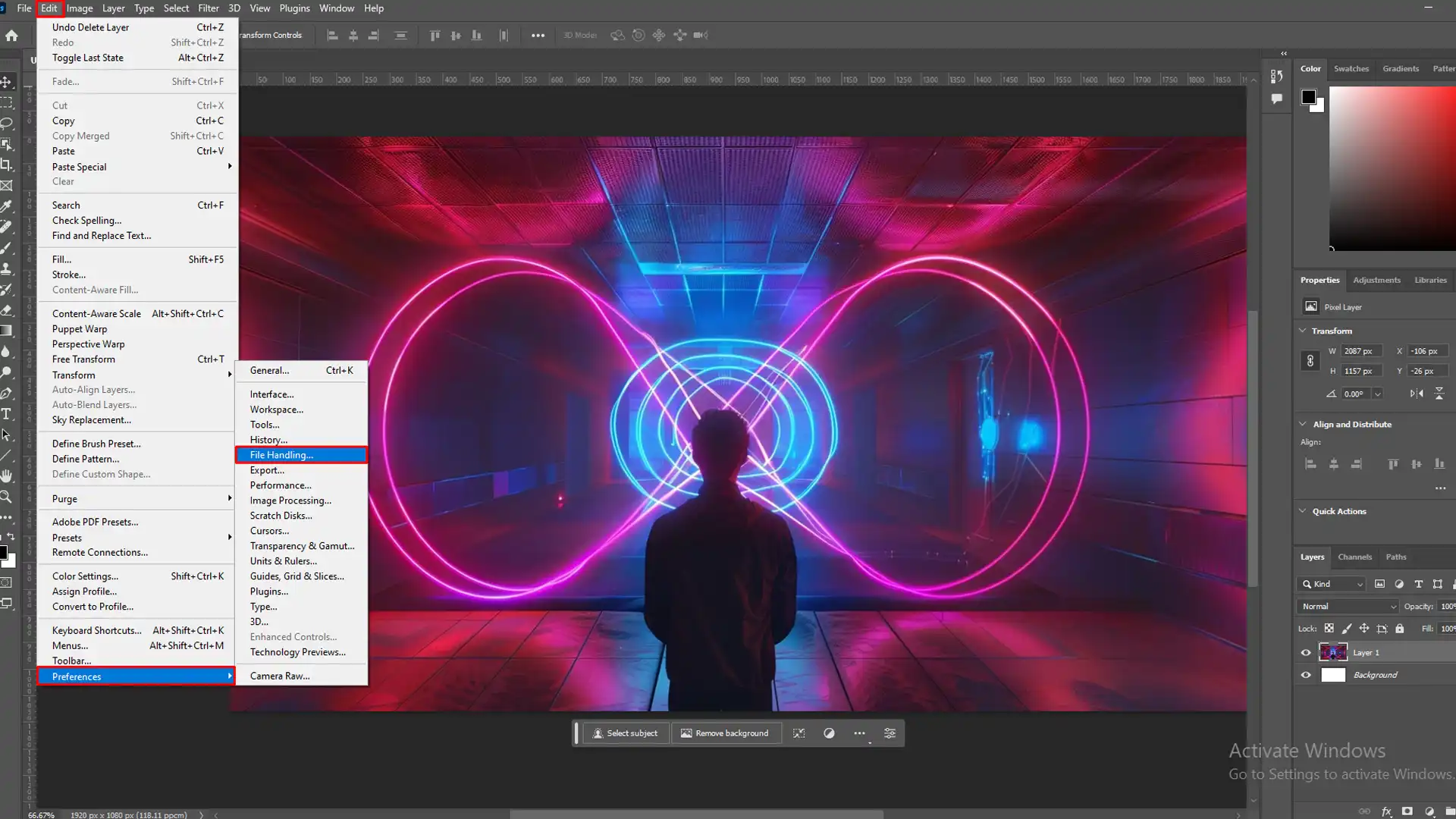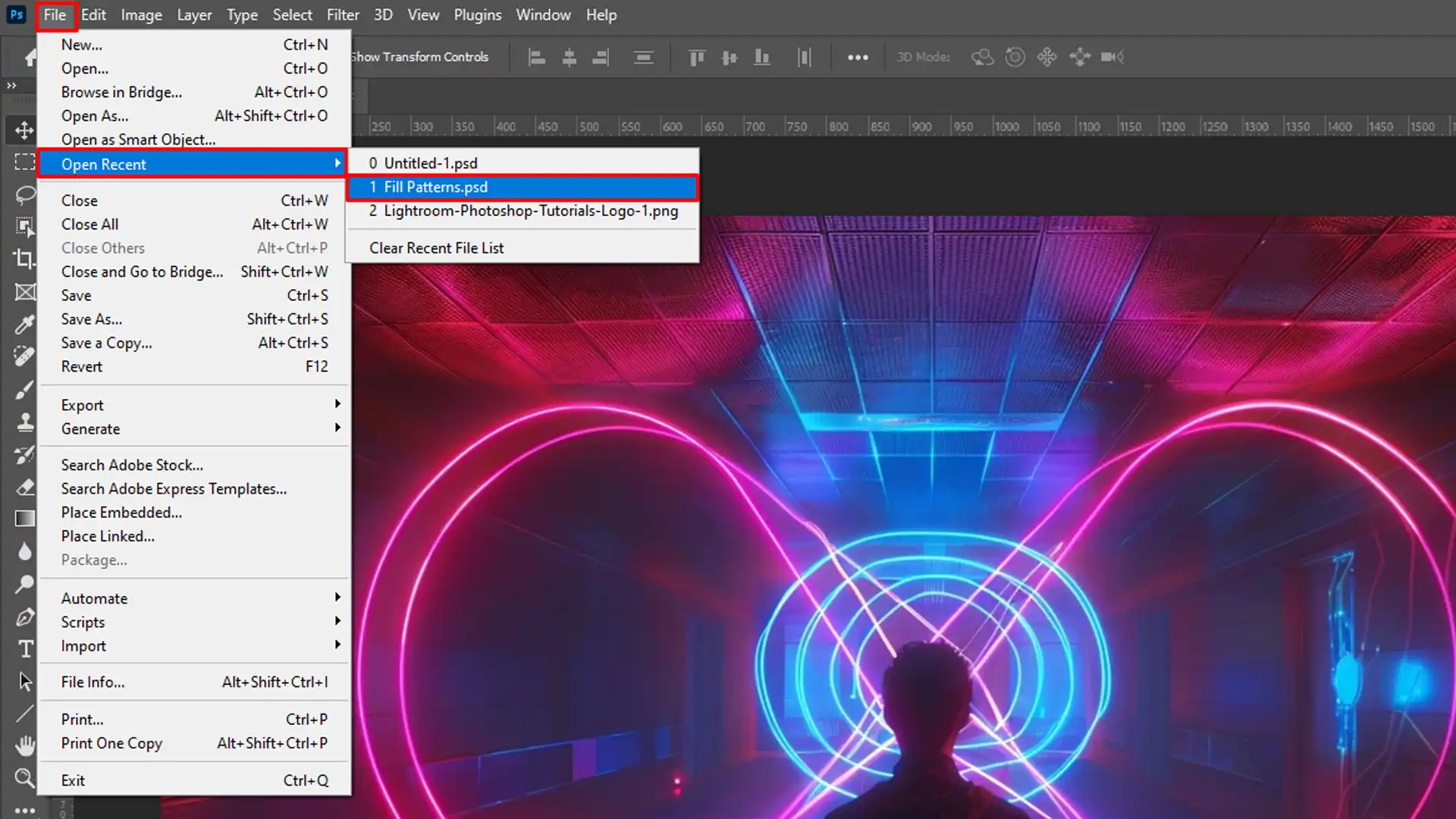
Have you ever lost hours of work because Photoshop crashed unexpectedly? The autosave Photoshop feature can be a real lifesaver, ensuring your hard work is never wasted.
Imagine working on a complex project and suddenly, without warning, everything disappears.
Frustrating, right?
That’s where Photoshop’s autosave steps in. It automatically saves your progress at regular intervals, so you can breathe easy and focus on your creativity. Intrigued?
Keep reading to discover how to enable and make the most of autosave in Photoshop, and never worry about losing your work again!
Table of Contents
Setting Up Autosave in Photoshop
To ensure you don’t lose your work unexpectedly, setting up autosave in Photoshop is essential.
This feature automatically saves your progress at regular intervals, reducing the risk of losing your edits due to crashes or power outages.
Step-by-Step Guide to Enable Autosave

Enabling the autosave feature in Photoshop can save you a lot of headaches. Let’s go through this step-by-step:
- First, open Photoshop.
- Go to the menu bar and select "Edit".
- Then go to "Preferences" and click on "File Handling".
- Here, you'll find the 'Automatically Save Recovery Information Every' option. Check this box.
- Choose how often you want Photoshop to save ,a good choice is 10 minutes.
- Click "OK" to save these settings.
Your saved files will now be periodically saved, minimizing the risk of losing your work.
Customizing Autosave Photoshop Settings

Customizing the autosave settings can help suit your specific needs:
- Go back to "Edit", then "Preferences", and select "File Handling".
- Adjust how often the backup information is saved. You can set it to every 5, 10, or 15 minutes. It’s up to you!
- While you're here, you might also want to look at the option for "Saving in Background". Enabling this can allow you to continue working while your file saves in the background.
Check the Photoshop autosave location to know where your autosaved files are saved. Usually, they are stored in your system drive under the App Data Roaming Adobe folder.
Make sure to check it out if you’re having trouble finding them.
It’s important to remember that you can also enable ‘Auto Save Feature’ while saving your original file manually.
This way, every time you save a PSD file, the autosave feature makes sure it keeps track of the changes.
Pro Tip: Always manually save before closing Photoshop. It ensures your latest changes are stored.
For detailed adjustments and close-up edits, you might find this tutorial on how to zoom in on Photoshop or learning how to use lens correction in Lightroom very helpful.
For more advanced tips, you might want to explore essential tools in Photoshop and essential tools in Lightroom, or learn about Photoshop shortcuts and Lightroom shortcuts to streamline your workflow even further.
Recovering Lost Photoshop Data
If you’ve ever worked late into the night on a complex design project in Adobe Photoshop, only to have your computer crash before you could click ‘Save’, you know the panic that ensues.
Let’s dive into the world of recovering those precious Photoshop files.
How to Recover Unsaved Photoshop Files
Recovering unsaved Photoshop files can be crucial if you experience a sudden shutdown or crash. Even if you haven’t manually saved your work, Photoshop often creates temporary files that can be recovered.
Step-by-Step Guide:
First, breathe. Worst case scenario, Photoshop has an auto save settings that automatically saves your work at regular intervals.
To increase your chances of recovery, immediately reopen Photoshop. You might get lucky with the auto recovery prompt offering to restore your work.
Check Temporary File Folder:
Check the temporary file recovery folder on your computer. These temp files sometimes hold the key to recovering unsaved files.
Navigate to:
- Windows: C:\Users\[Your Username]\AppData\Roaming\Adobe\Adobe Photoshop [Version]\AutoRecover
- MacOS: [Your Username]/Library/Application Support/Adobe/Adobe Photoshop [Version]/AutoRecover
If you find your file there, open it and immediately save it with a new name.
No luck?
Check Photoshop’s ‘File Handling’ preferences to ensure the autosave function is turned on for future projects.
Using Adobe Photoshop Recovery Tools

Adobe Photoshop provides built-in recovery tools that are handy. If your file disappears.
Try these steps:
- Reopen Photoshop and look for 'Open Recent' under 'File' in the menu bar.
- This taps into the file history, allowing you to select a previous state of your project.
- Adobe's Auto Save settings allow background save, so even during long saves, you can continue working uninterrupted.
- To further safeguard your work, periodically save your projects manually in addition to relying on autosave.
Remember those community guidelines you’ve read some time ago? They often mention the importance of saving files multiple ways to prevent loss.
Always keep this at the back of your mind.
Pro Tip: For extra caution, enable cloud saving options to have your work backed up in real time. This offers a reliable safety net against unexpected data loss and simplifies sharing projects across devices.
This also helps in the installation of other features and tools, such as Lightroom presets, in case something goes wrong,
Best Practices for Autosave Photoshop Feature
To ensure that your work in Photoshop is always protected, following best practices for autosave is essential.
These practices help you maintain your progress, avoid data loss, and minimize disruptions.
Implementing these tips can make autosave more effective and reliable, giving you peace of mind while working on your creative projects.
Enable Autosave
First, ensure the autosave function is enabled. Go to ‘Edit’ > ‘Preferences’ > ‘File Handling’. Check the box for ‘Automatically Save Recovery Information’. This step saves woes later.
Manual Saves

Always manually save your Photoshop file. Press ‘Ctrl+S’ or ‘Cmd+S’ frequently. It’s a simple habit with big rewards.
Check File History
Regularly check file history. This option can restore previous states of your work. In the ‘File’ menu, find the ‘Previous Versions‘.
Restore what you need. This creates another safety net.
Back Up Your Projects
Back up your projects. Use cloud services like Adobe Creative Cloud. This not only keeps your files safe but also makes them accessible from any device.
Your PSD file remains secure and within reach.
Beware of Temp Files
Beware of temp files. If a crash occurs, these files might contain your unsaved file.
Check your system’s temporary file folder:
- For Windows: navigate to 'C:\Users\[Your Username]\AppData\Roaming\Adobe\Adobe Photoshop [Version]\AutoRecover'.
- For Mac: go to '[Your Username]/Library/Application Support/Adobe/Adobe Photoshop [Version]/AutoRecover'.
Regularly Saving Your Photoshop File
The correct answer for all questions is to manually save often. Your autosave settings only cover so much ground. A simple ‘Ctrl+S‘ or ‘Cmd+S’ saves extensive edits.
Set Reminders
Set reminders to keep saving. Use your phone or computer timer. Every 10-15 minutes, a gentle nudge keeps your Photoshop files saved on your hard drive.
Enable Background Save

Consider enabling background save. This lets you work while Photoshop saves in the background.
To enable, go to ‘Edit’ > ‘Preferences’ > ‘File Handling’ and tick the ‘Save in Background’ option.
This ensures uninterrupted workflow.
Check Recovery Information
Finally, always check recovery information provided by Photoshop. After a crash, the software might prompt restoration of your last session. Don’t ignore this prompt. It’s designed to help you bounce back quickly.
Pro Tip: Always close your files properly. Avoid force quitting or abrupt shutdowns. This minimizes the risk of corrupting your work.
When deciding between different file formats, understanding the RAW vs. JPEG formats can help you choose the best option for your needs.
If you’re looking to adjust the size of your images, check out this guide on resizing images in Photoshop.
Common Issues with Autosave Photoshop Feature
Auto save is a crucial feature in Photoshop that helps prevent data loss by automatically saving your work at regular intervals.
However, users occasionally encounter issues with this feature.
Here are some common issues with Photoshop’s auto save feature, along with their solutions to help you maintain a smooth workflow.
| Issue | Description | Solution |
|---|---|---|
| Autosave Not Working | Autosave feature is not saving your progress. | Check preferences, ensure autosave is enabled. |
| Disk Space Issues | Insufficient disk space affects autosave. | Free up disk space or change save location. |
| Third-Party Plugins | Plugins might interfere with autosave. | Update or disable problematic plugins. |
| Outdated Software | Old software versions may have bugs. | Update Photoshop and your operating system. |
| Corrupted Preferences | Corrupt settings can affect autosave. | Reset Photoshop preferences. |
Understanding and troubleshooting these common auto save problems can ensure that your work is consistently saved and protected from unexpected interruptions.
Troubleshooting Auto-save Problems
Auto save problems can be frustrating, but addressing them is essential for a smooth workflow.
First, verify that the autosave settings are configured correctly. Navigate to ‘Edit’ > ‘Preferences’ > ‘File Handling’ and ensure Automatically Backup Recovery Information is checked.
If autosave still fails, check if you have sufficient disk space.
Lack of space can hinder the autosave process.
Also, disable or update interfering third-party plugins.
Sometimes, resetting Photoshop preferences can solve autosave issues. Hold ‘Ctrl+Alt+Shift’ (Windows) or ‘Cmd+Option+Shift’ (Mac) during startup to reset preferences.
Additionally, ensure Photoshop and your operating system are updated to the latest versions.
Outdated software may cause conflicts with autosave.
When Autosave Fails
When autosave fails, you risk losing valuable work. Here’s how to minimize damage:
- Manual Saving Habits: Develop a habit of saving your files frequently using 'Ctrl+S' or 'Cmd+S'. Familiarize yourself with other essential Photoshop shortcuts to streamline your workflow.
- Check Temp Files: In case of a crash, search for temp file on your system. These might contain unsaved work.
- Utilize Previous Versions: Regularly check 'File' > 'Previous Versions' to restore lost work.
- Backup with Cloud Services: Use cloud services to backup your projects. This ensures files are secure and accessible from anywhere.
Finally, avoid shutting down your system abruptly to prevent file corruption. Always close Photoshop properly.
Pro Tip: Enable background save in ‘Edit’ > ‘Preferences’ > ‘File Handling’ so saving doesn’t interrupt your workflow.
For more advanced techniques, consider learning about content-aware fill in Photoshop to enhance your editing skills.
For a more efficient workflow in Photoshop, mastering the various selection tools can significantly enhance your editing precision.
Frequently Asked Questions (FAQs)

Where is autosave in Photoshop?
- In Photoshop, the autosave photoshop is typically enabled by default. You can find its settings under the 'Edit' menu, then 'Preferences', and finally 'File Handling'.
How do I set Photoshop to autosave?
- To set up Autosave in Photoshop, go to 'Edit', select 'Preferences', and choose 'File Handling'.
- Inside the File Handling preferences, you will see an option for 'Automatically Save Recovery Information Every [time interval]'. Here, you can set how often you want Photoshop to save your work automatically.
How do I recover an unsaved Photoshop file?
- If Photoshop closes unexpectedly before you save your work, you can recover unsaved files through the AutoRecover feature.
- When you restart Photoshop, it usually prompts you to recover the unsaved document from the last autosaved version.
Where is the Photoshop autosave folder on a Mac?
- On a Mac, the Photoshop autosave folder is typically located in '~/Library/Application Support/Adobe/Adobe Photoshop [version]/AutoRecover'.
- You can access this folder by opening the Finder, selecting 'Go' from the top menu, and then 'Go to Folder'. Type the path to navigate directly to the AutoRecover folder.
Conclusion
In my experience with Photoshop, dealing with autosave issues can be frustrating, but understanding common problems and their solutions makes it easier to handle.
If you’re facing problems with autosave in Photoshop, checking your preferences, disk space, and software updates can resolve many issues.
Sometimes, third-party plugins or corrupted preferences may interfere, but updating or resetting settings often helps.
For a more detailed look into managing Photoshop and Lightroom, you might find my Photoshop course and Lightroom course useful.
These courses cover essential tips and tricks that can improve your editing experience.
Also, for the latest features and updates, check out Adobe Photoshop and Adobe Lightroom.
These tools are essential for anyone serious about photo editing.
Happy Editing!
Read more about Photoshop:
















